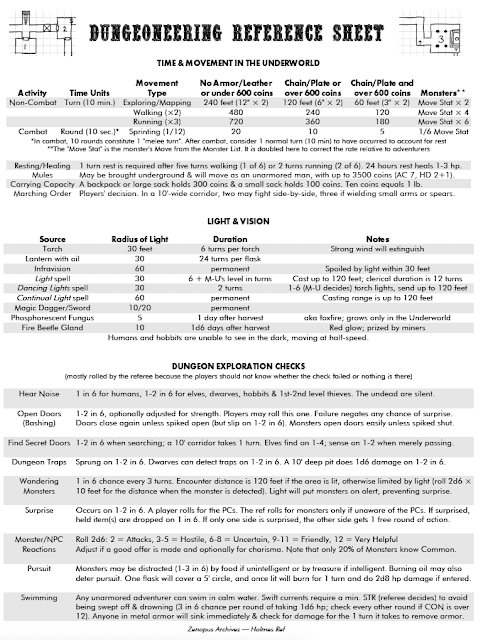 |
Screenshot of the new Dungeon Master's Map for The Ruined Tower of Zenopus |
The Ruined Tower of Zenopus now includes a map of the dungeon!
Yesterday I uploaded two separate dungeon map files to the Ruined Tower of Zenopus page on DMs Guild (as previously teased). These should be available for download by anyone who has already purchased the module, and for any new purchases. If you go to your account on DMs Guild there is a section near the top that says "Updated Files", which hopefully will show this product as updated on May 26th.
This map is derived from the map I made in Gridmapper a few years ago and posted here.
The two maps are variations of the same map; the first is a Dungeon Master's Map, a preview of which is shown above, and the second is a Player's Map. In addition to being labeled differently, the Player's Map has the room letters removed, along with the secret doors and corridor between Rooms S and F.
Each map comes as a png file with a size of 8400 pixels by 8190 pixels, a large size that is optimized for use in Roll20, but is also printable. See the notes for each use below. Each file is a little over 4 MB.
Each square on the map(s) is 10' wide, as in the original. A few corridors are not to scale due to the limitations of Gridmapper (or perhaps my lack of skill in using it). The secret corridor between Rooms S and F should only be 5' wide, and the rat tunnels should only be 3' wide (I noted the latter on the map).
Using in Roll20:
-Create a New Game. The Zoom should be set to 100% by default, but set it to that if not.
-Click on the Page Toolbar icon. There should be a Page called "Start". Hover your mouse over it and a gear will appear to the left titled "Page Settings". Click and a "Page Settings" menu will open. Change the Settings as follows:
-Under "Page Size", set the Width to 60 and the Height to 58.5. Under "Cell Width", change the size from 1 to 0.5.
-Leave the Page Toolbar by clicking on the page called "Start". Now go to the toolbar on the left, and click on the "pin" icon (second from top). A menu will open. Change from Objects and Tokens to "Maps & Background". If you don't do this, your map will import as a token and the grid will not overlay the map.
-Again confirm Zoom is set to 100%. Drag the map file (the DM's or Player's Map) from your desktop (or folder) to the Roll20 Page workspace. This will import the map. In the workspace, drag the map until the upper left corner of the imported map is exactly aligned with the upper left corner of the workspace. This should line up the map exactly with four 5' squares inside each 10' square on the map.
-You can change the color of the grid in the Page Toolbar if you'd like the 5' squares to be darker or lighter (you can even set them to white so they are invisible).
-Note if you are using the Player's Map, you will need to add the Secret Passage between Rooms F and S if the PCs find it. This can be done either by drawing it on the map using the Roll20 drawing tools, or I think you can cut and paste the corridor from the DM's Map and import it into Roll20 and overlay it on the map in the appropriate spot.
Printing the Map: The map can be printed on a sheet of paper, but be warned that since the background is black and fills the negative space, it will use a lot of black ink or toner. The map file is only 75 dpi but is so large it should print at a fine resolution when shrunk to the sheet of a paper. I tested this and it printed fine using a "Shrink to Fit" setting, which was about 7% of the original size.
I hope to make a more printer-friendly option available in the future.
Product Link:
The Ruined Tower of Zenopus on DMs Guild
Click here to read reviews of the RTOZ by various bloggers

